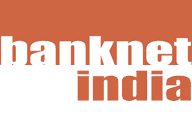 banking
overview
| coop banks
| basics
|
lending
|adv banking
| products
| IT
& banking
banking
overview
| coop banks
| basics
|
lending
|adv banking
| products
| IT
& banking
daily news |
banking software|
bank directory|
internet banking|
IT directory|
Banknet Jobs
Reserve Bank of India- Monetory and Credit Policies (1999-2010) click here
Bank lending rates in India are expected to go up after March 2010
RBI's unexpected hike in repo rates, a month before the monetary policy is a clear signal that the central bank is now confident about the growth of the economy. Hence, the RBI is moving towards reining in inflation that has already gone way past the central bank's estimates.
RBI's notification has pointed out that food prices, despite some moderation in the last few weeks remain at an elevated 16%; the consumer price indices have been rising in recent months.
Banks pay the repo rate to borrow from RBI and receive the reverse repo rate for parking surplus funds with the central bank. The repo rate is up from 4.75% to 5% while the reverse repo rate is up from 3.25% to 3.5% with immediate effect. The higher repo rate will affect banks only when they start borrowing from the RBI. Currently banks have Rs 70,000 crore of surplus cash which they keep with the RBI.
There may be another rate hike in the April review of credit policy, if its latest steps don't lead to tapering of inflation.
Itís a clear that bank rates are going to harden soon.Even before RBI's rate hike, many private banks including HDFC Bank, ICICI Bank & Kotak Mahindra have hiked rates for home and car loans in India.
Banks are expected to take a call on raising the deposit and lending rates after the current financial year ending 31st March 2010. Credit offtake and systemic liquidity will decide the quantum of increase in lending and borrowing rates. Already
Rationale behind repo rate hike-Click here
RBI's Policy Measures on 19th March 2010 -Click here
Domestic Bank Lending Rates-Click here
More News & Stories...Click here
![]()
![]()
![]()
![]()
Advertise
| Book Store |
About us |
Contact us
| Terms of use | Disclaimer
© Banknet India |
All rights reserved worldwide.
Best viewed with IE 4.00 & above at a screen resolution of 800 x 600
or higher
